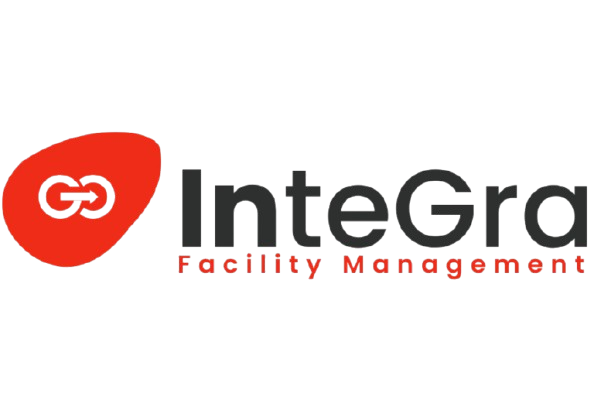Frequently Asked Questions
1. Why Integra?
Choosing the right partner makes all the difference. With 10+ years of experience in Facility Management and specialized expertise in Builder-to-Association transition, Integra has become the trusted choice for 300+ communities.
We know the challenges associations face at this stage—fund transfers, documentation, statutory clearances, and defect rectifications. Our end-to-end transition services ensure nothing is missed.
👉 Partner with Integra and experience a smooth, transparent, and hassle-free handover—because your community deserves the best.
2. Why is the transition important for residents?
The transition ensures
- Transparency in financial handover (corpus fund, maintenance charges)
- Legal ownership of common areas
- Smooth management of facilities (security, housekeeping, maintenance)
- Accountability of the builder to fix any defects within the defect liability period
3. When should the association initiate the handover process?
Ideally, the process starts once:
- A majority of flats are occupied
- The association is legally registered
- Builder has obtained mandatory approvals like Occupancy Certificate (OC) and Completion Certificate (CC)
4. What are the essential documents should the builder hand over?
The builder is expected to provide:
- Occupancy Certificate (OC) & Completion Certificate (CC)
- Fire, Lift, STP/WTP, and Pollution Control approvals
- As-built drawings and layout plans
- Asset registers with warranty/AMC details
- Vendor contracts (security, housekeeping, maintenance)
- Statement of funds (corpus, sinking fund, advance collections)
5. What are common challenges during the handover?
- Delay in transfer of corpus funds and documents
- Incomplete statutory approvals from the builder
- Poor maintenance of equipment before handover
- Defects in common areas left unattended
- Confusion over roles of builder vs. association
6. How long does the transition process take?
- On average, a smooth transition can take 2–4 months, depending on the size of the community, completeness of documents, and cooperation from the builder.
7. What is the process flow from Adhoc Committee formation to takeover from the builder?
The typical process flow is:
- Adhoc Committee Formation – Residents form an interim body to initiate handover.
- Association Registration – Get the RWA/Association registered legally.
- Snag & Asset Audit – Conduct joint inspection and audits of assets, utilities, and common areas.
- Rectification & Compliance – Builder addresses identified defects and statutory gaps.
- Final Handover – Association formally takes control of finances, documents, and facility management.
8. What if there are pending items with the builder?
Pending works or unresolved issues should be clearly documented in a snag list or handover MOM (Minutes of Meeting) with timelines for completion. If the builder delays, the association may escalate through RERA, legal notices, or by holding back part of the handover acceptance until rectification.
9. Can the snag audit report be used for legal purposes?
Yes. A professionally prepared Snag/Defect Audit Report can serve as evidence in disputes with the builder. It provides a technical, third-party record of deficiencies, which strengthens the association’s case before RERA, consumer courts, or arbitration.
10. Is there any authorization required for a snag audit?
Yes. The association or Adhoc Committee should provide a formal written authorization to the agency or engineer conducting the audit. This ensures the report is valid, accepted by all stakeholders, and can be used in legal or compliance matters if needed.
11. Can BAT be done by an individual association without a third-party agency?
While it is possible, it is not advisable. BAT involves technical checks across civil, electrical, plumbing, safety, and legal domains. Most associations lack the in-house expertise to verify everything thoroughly. A neutral third-party agency ensures transparency, unbiased reporting, and protects residents’ long-term interests.
12. Why should BAT and Facility Management (FMS) vendor be the same?
When the same vendor handles both BAT and ongoing Facility Management:
- They already have a detailed understanding of the property
- Snags and defects are monitored more effectively
- Transition is smoother, with no duplication of work
- Accountability is higher, since one partner is responsible end-to-end
However, associations may choose separate vendors if they wish, but having one reliable partner often reduces risk and ensures continuity.
13. What is the Defect Liability Period (DLP)?
The DLP is the period (usually 1–5 years, depending on state laws and agreement) during which the builder is responsible for rectifying defects in construction or equipment. Associations must document all issues and inform the builder within this period.
14. Who manages day-to-day operations during the transition?
During transition, either:
- The builder’s facility management team continues until handover, or
- The association engages an interim Facility Management partner.
A clear overlap/transition plan is critical to avoid service disruptions.
15. What if the builder refuses to cooperate in the handover?
If the builder delays or refuses:
- Send reminders and formal notices.
- Escalate to RERA or local housing authority.
- Seek legal remedies through consumer forums.
A professional BAT partner can also mediate and document gaps formally.
16. What happens to existing vendor contracts during BAT?
All contracts (security, housekeeping, STP, lift AMC, etc.) must be formally reviewed. The association may:
- Continue with the same vendors, or
- Negotiate new contracts based on performance and cost.
17. Can the association modify rules after handover?
Yes. Once the handover is complete, the association has full rights to create or modify
bylaws, house rules, and maintenance policies, provided they are in line with local laws and registration documents.
18. How does the association handle financial post-handover?
- Open a dedicated bank account in the association’s name
- Record all inflows and outflows with proper receipts
- Appoint an auditor for annual financial audits
- Share quarterly statements with residents for trust and accountability
19. How is the per sq.ft. maintenance charge calculated?
- Per Sq.Ft. Rate = Total Monthly Expenses ÷ Total Super Built-up Area of the Community
